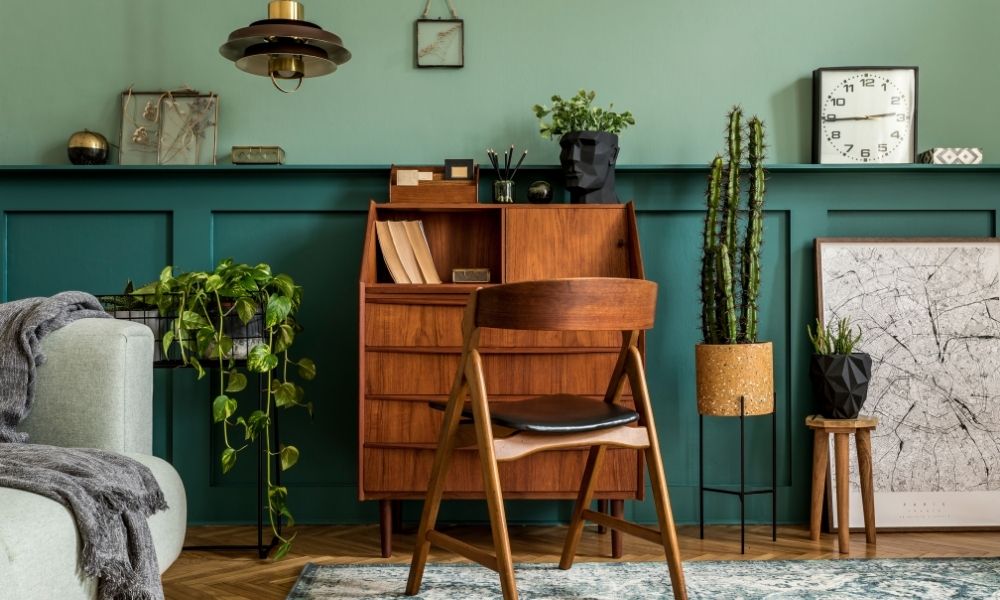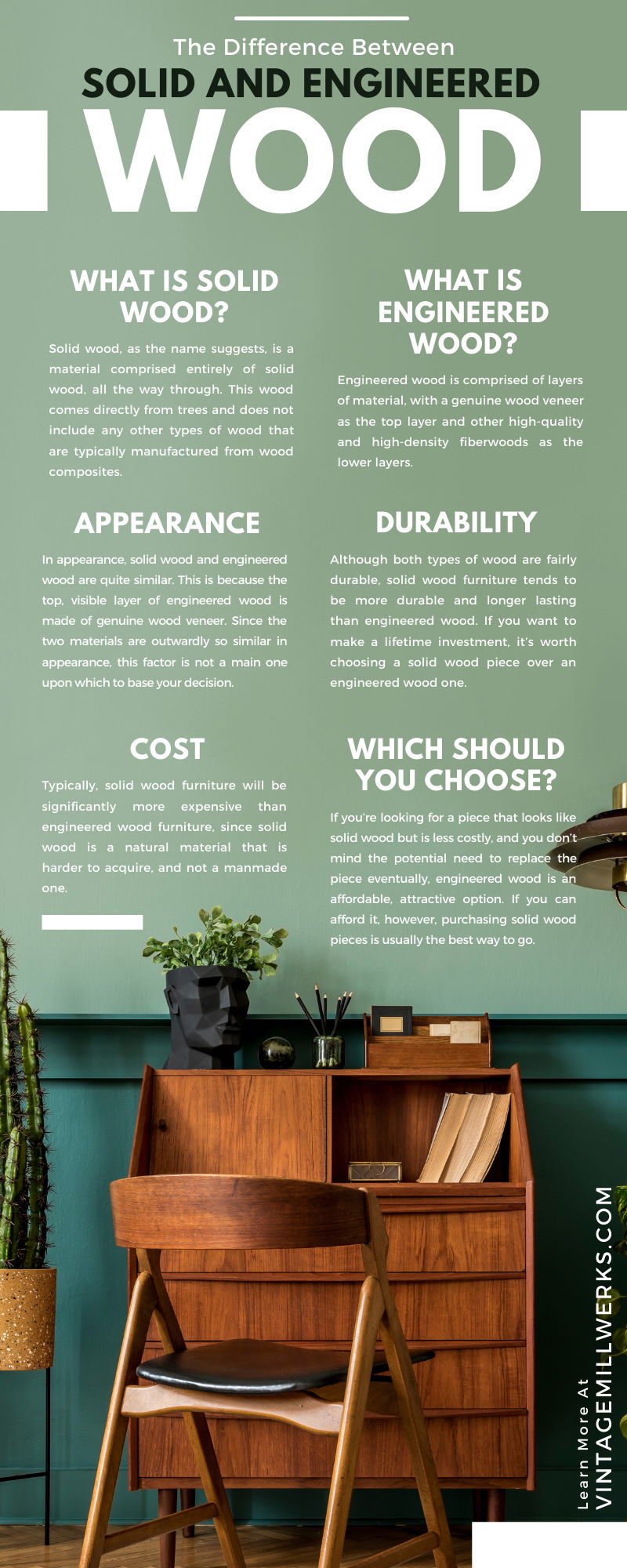
At some point in your search for the perfect piece of wood furniture for your home, you’ll need to make the decision between solid wood and engineered wood. What’s the big deal, you might ask? Is there really such great a difference between the two? Actually, yes—there is. In this article, we’ll outline the difference between solid and engineered wood. Take note, because these differences are likely elements that will ultimately impact your decision between the two.
What Is Solid Wood?
Before comparing solid wood and engineered wood, you’ll need to know what exactly each is. Solid wood, as the name suggests, is a material comprised entirely of solid wood, all the way through. This wood comes directly from trees and does not include any other types of wood that are typically manufactured from wood composites, such as plywood. Since solid wood is made of a single, uniform piece of wood, it does not have any layers that must be held together with adhesive. There are two main varieties of solid wood: softwood, which includes poplar, cedar, and pinewood, and hardwood, which includes cherry, walnut, birch, oak, maple, and hickory wood, among other types.
What Is Engineered Wood?
Like solid wood, engineered wood is considered 100 percent real wood, but it has a different makeup than solid wood. Engineered wood is comprised of layers of material, with a genuine wood veneer as the top layer and other high-quality and high-density fiberwoods as the lower layers. Unlike solid wood, engineered wood is largely manmade and its many layers are held together with adhesive.
What Engineered Wood Is Not
One thing to keep in mind in the comparison of solid wood to engineered wood is what engineered wood is not: engineered wood is not laminate. Laminate is a synthetic material that simulates the appearance of real wood material, but in the end, it is not real wood. Engineered wood, while manmade, is made entirely of genuine wood. Its main difference from solid wood is simply that engineered wood is made of layers rather than being a single, solid piece.
Solid and Engineered Wood Compared
While solid and engineered wood are, at their cores, both genuine wood, there are a few key differences between the two. The main differences between solid and engineered wood are explained below.
Construction
The defining difference between solid wood and engineered wood is the construction of each. Solid wood naturally formed; it has no layers and is made of a single, solid piece of wood. Generally, a piece of solid wood furniture will be crafted from several pieces of solid wood fastened together to create the piece. Engineered wood is also constructed in the manner its name suggests: although it is made of natural wood material, it is a manmade, engineered material. Its top layer is wood veneer, but its lower layers are made of plywood or a similar wood material. In a high-quality engineered wood product, however, this does not mean engineered wood is a cheap, flimsy material, as good quality plywood can be quite sturdy.
Appearance
In appearance, solid wood and engineered wood are quite similar. This is because the top, visible layer of engineered wood is made of genuine wood veneer. One benefit of engineered wood is that it allows you to create the appearance of an item made of a softer wood without the item being fully constructed of that material, giving the item more durability than it might have if it was made of a soft, solid wood. Since the two materials are outwardly so similar in appearance, this factor is not a main one upon which to base your decision.
Resistance To Moisture
Because they have different constructions, solid wood and engineered wood have differing amounts of resistance to moisture. Wood typically doesn’t go too well with moisture, as too much moisture or sudden, drastic changes in temperature can cause wood to expand or contract significantly. In general, engineered wood tends to be less affected by moisture than solid wood, but too much moisture with either type is a bad combination. When considering which type of wood furniture to purchase, take into consideration the environment of your home, including humidity levels.
Durability
Although both types of wood are fairly durable, solid wood furniture tends to be more durable and longer lasting than engineered wood. If you want to make a lifetime investment, it’s worth choosing a solid wood piece over an engineered wood one, but if you like to frequently switch out the furniture in your home or don’t mind needing to replace pieces when they wear out, engineered wood is still a very good option.
Maintenance
Since solid wood and engineered wood are quite similar on the surface, basic maintenance such as cleaning will be about the same for both types of wood. If you plan to touch up, refinish, or otherwise customize your furniture somewhere down the line, solid wood furniture has much more potential than engineered wood. This is because solid wood can be sanded down and refinished as many times as desired, while engineered wood has only a thin top coating of genuine wood with which to work. This is also one reason that solid wood pieces are considered easier to repair than engineered wood ones.
Cost
Cost is another area in which solid wood and engineered wood differ: typically, solid wood furniture will be significantly more expensive than engineered wood furniture, since solid wood is a natural material that is harder to acquire, and not a manmade one. Solid wood pieces are an investment, but if you can afford to do so, it’s usually worth paying the extra money to purchase a long-lasting, durable, and quality piece that won’t need to be replaced anytime soon.
Which Should You Choose?
When it comes to furniture, both solid wood and engineered wood have their pros and cons. If you’re looking for a piece that looks like solid wood but is less costly, and you don’t mind the potential need to replace the piece eventually, engineered wood is an affordable, attractive option. If you can afford it, however, purchasing solid wood pieces is usually the best way to go. Solid wood furniture can last for generations, and a piece of quality solid, handcrafted wood furniture will be a beautiful and worthwhile addition to your home.

